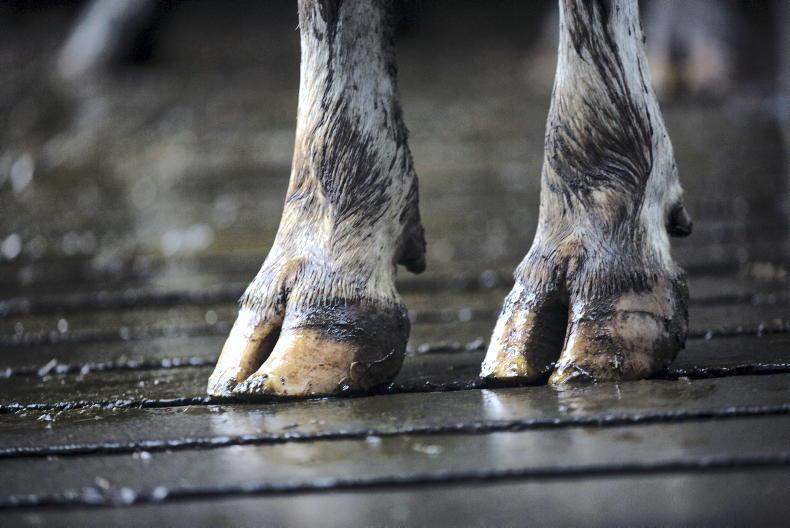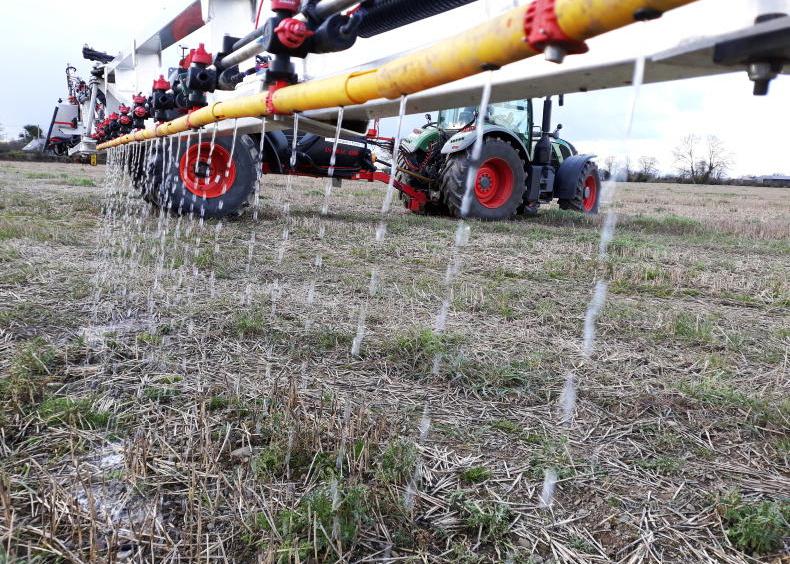Brian Keane farms 96ha near Enniscorthy, Co Wexford alongside his father John, Uncle Aidan, brother Eoin, fiancée Blathnáid and their son Seán. There are sheep, cattle and tillage enterprises on the 96ha farm with approximately 5ha of commercial forestry and a further 10ha of land taken up by disused quarries, groves, rivers, streams and lanes. There is roughly a 50:50 split between grassland and tillage on the farm.
The sheep enterprise comprises of 200 mid-season lambing ewes lambing from 1 March, predominately Suffolk and Belclare crosses.
As part of the Keane’s farm plan there are a number of areas highlighted for change and development such as grassland management, flock breeding, etc, to help improve the overall farm performance while also making the farm more sustainable. Improving animal health is a key part of that plan, particularly among the sheep flock. Improving animal health and developing a flock health plan is one of the 12 steps to reduce gaseous emissions on sheep farms.
A flock health plan is being followed based on data gathered and testing, carried out in recent years, to identify issues. While all areas of flock health are being monitored, two main areas that needed addressing on this farm were anthelmintic usage and infectious lameness.
The anthelmintic resistance status of the farm has been assessed through a faecal egg reduction test carried out on the 2-LV: Levamisole (Yellow Group) and 3-ML: Macrocyclic Lactone (Clear Group) drenches.
The criteria for anthelmintic products to be deemed fully effective is that there should be a >95% reduction in faecal egg counts from the pre- to post-dosing faecal egg counts. On Brian’s farm the Levamisole worked correctly getting a 99% reduction between the pre- and post-dosing faecal egg counts. However, the Macrocyclic Lactone failed the test, only achieving an 84% reduction between the pre- and post-faecal egg counts.
Dosing products
Brian has to carefully decide what anthelmintic products to use going forward when dosing his lambs for stomach worms and carefully follow best practice around anthelmintic usage to ensure that the Levamisole drench remains working and the Macrocyclic Lactones do not deteriorate rapidly more than they currently have. A key part of this is taking regular faecal egg counts from May until October from the lambs and only dosing lambs for stomach worms when egg counts are > 500 eggs per gram. Adult sheep are not dosed for stomach worms unless there is a very clear need occasionally.
This situation has been further complicated this summer by the diagnosis of Haemonchus contortus or Barbers Pole worm infection developed on the farm which affected both adult sheep and lambs.
A combination of faecal egg counts and using the local DAFM regional veterinary laboratory helped to diagnose this issue and once again highlights the importance of using faecal egg counts prior to using any anthelmintic product in lambs.
All sheep on the farm were treated with a closantel-based anthelmintic (effective against Haemonchus and will not have further negative effects on the efficacy of Levamisole or Macrocyclic Lactone) and faecal egg counts monitored for the remainder of the grazing season.
Another key issue being addressed in the flock is infectious lameness. There are three types of ovine infectious lameness namely; Interdigital Dermatitis (Scald), Footrot and Contagious Ovine Digital Dermatitis (CODD).
Interdigital Dermatitis and Footrot are both the most prevalent types of infectious lameness in Irish sheep flocks. Anecdotal evidence currently suggests that CODD is an emerging issue within Irish flocks and is now widely present in UK sheep flocks.
Correct identification and treatment of the specific lameness issue present in the flock is essential to controlling and managing infectious lameness conditions. Failure to do this can result in decreased animal performance, potential misuse of antibiotics and increased costs.
Research project
As presented in Table 1, there are cases of all three types of infectious lameness in the Keane’s flock.
This data was collected as part of a Teagasc / UCD research project examining the effects of infectious lameness on Irish sheep production. Getting the rate down takes time but now with a diagnosis of the conditions, a plan can be put in place.
The main elements of this are correct foot bathing facilities and procedures, separating lame sheep once identified and keeping them separate from the main group of sheep until cured and finally treating lame sheep in conjunction with his vet to ensure the correct treatment is administered. Persistently lame sheep should also be culled, as they are likely to keep developing lameness issues.










SHARING OPTIONS